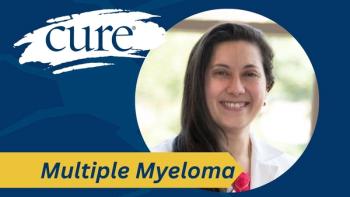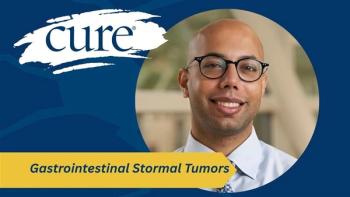
Opdivo Shows Robust Five-Year Survival Rate in Early Melanoma Study
Opdivo (nivolumab) is showing promise for patients with metastatic melanoma.
Heavily pretreated patients with metastatic melanoma who took Opdivo (nivolumab) demonstrated a 34 percent five-year survival rate in a single-arm phase 1 study, which is double survival statistics from the SEER database.
Findings from the study, which was presented at the 2016 AACR Annual Meeting, represent the first report of long-term outcomes from a clinical trial exploring a PD-1 inhibitor. From 2006 to 2012, the database lists a five-year survival rate of 17.9 percent.
“These data represent the longest survival follow-up of patients who received anti—PD-1 therapy in a clinical study, and suggest durable, long-term survival with Opdivo monotherapy,” said lead investigator F. Stephen Hodi, director of the Melanoma Center at Dana-Farber Cancer Institute. “Opdivo continued to be safe and tolerable, with no deaths or new safety signals”
In the study, which was labeled CA209-003, 107 patients received Opdivo across five dose levels every two weeks. Doses were escalated from 0.1 mg/kg to 10 mg/kg and were continued for under 96 weeks. The primary endpoints were safety and tolerability with secondary outcomes focused on efficacy, with an amendment to the original protocol to assess long-term OS.
The median age of patients was 61 years, and most had an ECOG PS of zero or one (97 percent). Sixty-two percent of patients had received at least two prior therapies, including 46 percent who received prior interleukin-2. Overall, 78 percent of patients had visceral metastases at baseline and 36 percent had elevated LDH levels.
After a minimum follow-up of 45 months, median OS was 17.3 months with Opdivo. According to the Kaplan-Meier curves, the median survival plateaued at month 48, with a follow-up duration of 80 months for some patients. At 30 months, the progression-free survival (PFS) rate was 18.6 percent.
In those 17 patients treated specifically with the 3-mg/kg dose of Opdivo, which is the FDA-approved dose, the median OS was 20.3 months. The five-year OS rate was 35.3 percent and the 30-month PFS rate was 25.7 percent.
“In all patients, there is a plateauing, a so called tail on the curve, and it’s lasting many months to years, and about a third of patients have this long-term survival,” said Hodi. “Those who make it to 48 months, have a very good chance of surviving their disease.”
An exploratory analysis looked at patients who were retreated with single-agent Opdivo. Patients were eligible for retreatment if they had initial disease control and subsequent progression, no dose-limiting adverse events (AEs), and went one year without progressive disease. Patients restarted Opdivo at the same dose originally assigned for up to a total of three years including the initial treatment period. Five patients who were off treatment for 100 days experienced durable disease control with Opdivo retreatment. One patient in this group, who remains on treatment, had adrenal metastasis that was excised, resulting in no evidence of disease and a long-term benefit.
“Updated analysis of retreated patients showed that disease control was maintained,” said Hodi. “This demonstrates the importance of the durability of clinical benefit for patients; now, we are measuring in terms years. As well as the memory aspect, how the immunologic memory translated to better outcomes.”
Across all dose levels, 84.1 percent of patients experienced an AE, with 23.4 percent being grade 3/4 in severity. At three mg/kg, all-grade AEs were 88.2 percent and grade 3/4 AEs occurred in 35.3 percent of patients.
The most common Opdivo -related all-grade AEs across doses were fatigue (29.9 percent), rash (23.4 percent), diarrhea (17.8 percent), pruritus (13.1 percent) and nausea (8.4 percent). AEs led to treatment discontinuation for 10.3 percent of patients. The most common grade 3/4 AEs were lymphopenia (2.8 percent), fatigue (1.9 percent), diarrhea (1.9 percent) and nausea (0.9 percent).
Initial findings from the phase 1 study, which also enrolled patients with renal cell carcinoma (RCC) and non—small cell lung cancer (NSCLC), ushered in a new era focused on immunotherapy. Following a presentation of the results at the 2012 ASCO Annual Meeting, a number of larger studies were initiated, which quickly led to approvals for Opdivo across a variety of settings based on phase 3 studies.
“What distinguishes immunotherapy from other forms of cancer treatment is the durability of the benefit. Those who have complete responses seem to be protected from that disease recurring,” said Louis M. Weiner, director of the Georgetown Lombardi Comprehensive Cancer Center, who moderated a press conference. “The memory and the adaptability of the immune response to pick off resistant variables is an important take-home here. These are very compelling data to suggest that this is the case.”
Opdivo is currently approved as a single-agent and in combination with Yervoy for patients with metastatic melanoma. Additionally, the agent is approved for patients with non-squamous and squamous NSCLC and for those with metastatic RCC.
An application to further expand Opdivo 's indication is currently pending with the FDA, for use of the PD-1 inhibitor to treat patients with classical Hodgkin lymphoma, with a decision expected in the second half of 2016. Additionally, an application will be filed within the coming months for the agent as a treatment for head and neck cancer, based on an extension in OS in a phase 3 study.
Hodi SF, Kluger HM, Sznol M, et al. Durable, Long-term Survival in Previously Treated Patients With Advanced Melanoma Who Received Nivolumab Monotherapy in a Phase I Trial. Presented at the 2016 AACR Annual Meeting; April 16-20, New Orleans, Louisiana. Abstract CT001.





